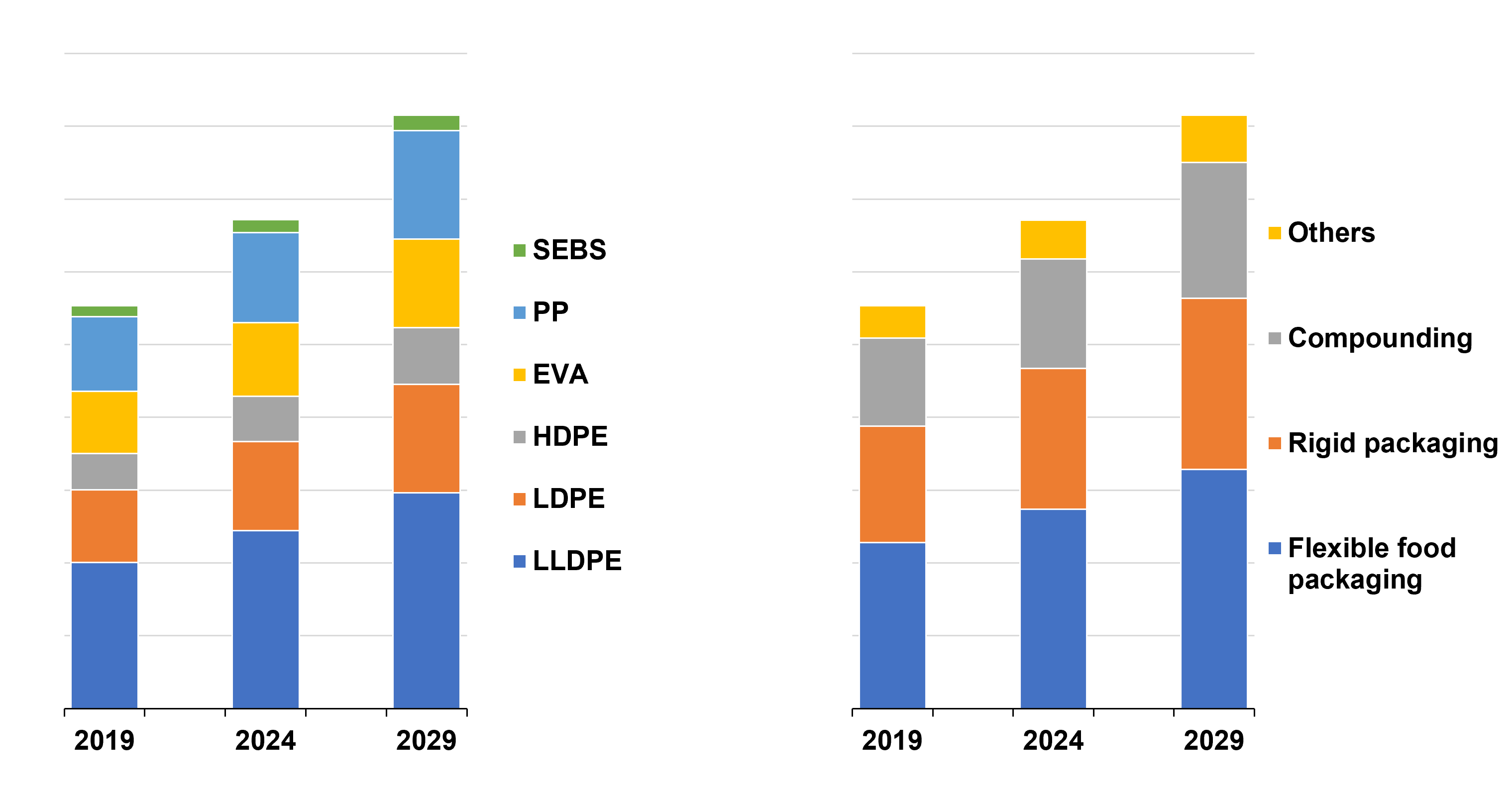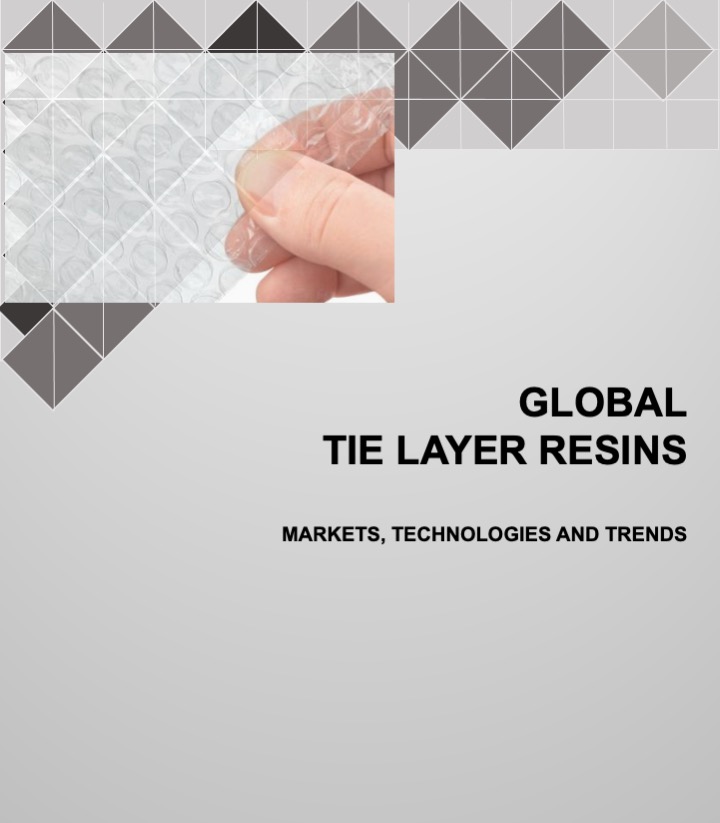Tie Layer Resin Technologies
Tie layer resins (TLR) are functionalized polyolefins that are produced by grafting anhydrides or acids to a polyolefin substrate in a post-reactor process. TLR are crucial for bonding dissimilar resins in multi-layer structures. For example, multi-layer packaging structures commonly include a non-polar polyolefin layer and a polar barrier resin layer, such as EVOH. A tie layer allows the polar and non-polar layers to adhere to each other. The most widely used polyolefin base materials for producing tie layer resins are linear low density polyethylene (LLDPE), low density polyethylene (LDPE), high density polyethylene (HDPE), polypropylene (PP), ethyl vinyl acetate (EVA), and styrene-ethylene-butylene-styrene (SEBS). The type of TLR used for a specific application is chosen based on factors including adhesion characteristics and the substrates to be bonded. New TLR based on polyolefins produced with advanced Ziegler-Natta and metallocene catalysts have some advantages.
Market Drivers and Major Players in the Global Tie Layer Resin Market
Flexible packaging has traditionally been the largest user of TLR, as barrier resins are used to improve shelf life. For example, cheese and meat packaging account for the largest consumption of TLR. Typical rigid packaging applications include multi-layer bottles and containers. TLR are also used in multi-layer gas tanks in automotive applications. In addition to multi-layer products, TLR are used to enhance adhesion between dissimilar components in compounding applications such as wood-plastic composites, nylon modification, and coupling agents for PP. Innovation is occurring by companies in this space to advance properties in all aspects, from the base materials through the processing to the product development arena. New products can handle the higher temperatures needed for retort packaging and hot-fill applications. Leaders in the tie layer resins industry are Dow (including former DuPont brands), LyondellBasell, Mitsui Chemicals, Arkema, and Mitsubishi Chemical Performance Polymers. North America has been the largest consumer of tie layer resins, with flexible food packaging being the largest application in terms of global consumption in 2019. Tie layer resins have continued to show significant growth in emerging economies in the past five years, with China and Rest of Asia regions expected to witness the fastest growth, driven by lifestyle changes. Exhibit 1 shows the outlook of tie layer resins demand by resin type and end-use application.

Exhibit 1. Global tie layer resins demand, by resin type and application in kilo tons per year
Tie Layer Resin Market Assessment
ADI Chemical Market Resources (ADI CMR) has conducted a strategic analysis that covers all major developments in the industry including changing market dynamics, technology trends, evolving industry structure and strategic alliances, and the current and expected competitive landscape, with a renewed emphasis on the emerging regions. Market forecasts are presented by region and application for the next five years with a vision of the next 10 years. The report is based on thorough analysis of the industry through a wide range of methods, including published information, patent searches, ADI CMR proprietary projects, and interviews with leading suppliers, film converters, and major end-users in each market segment. Manufacturing cost economics and pricing structures are based on ADI CMR’s extensive cost databases and interviews. The geographic focus of the market assessment will be regions segmented into North America, South America, Europe, Middle East and Africa, China, Japan, and Rest of Asia. The report will particularly benefit global tie layer resin producers, integrated suppliers, film producers that are competing in the flexible packaging market, and tie layer resin import and export service providers. The information will also benefit polyolefin producers, compounders, and packaging industry participants, as well as individual end-users, entrepreneurs, and organizations attempting to understand these complex issues and capture future growth in the marketplace.
Table of Contents
Click here for the table of contents for this report.
Prospectus
Please fill this form and check your email for a link to download the prospectus. For a custom report on a topic of your choice or an updated version of an existing report, please contact us at +1 (281) 506-8234 or info@adi-cmr.com.


